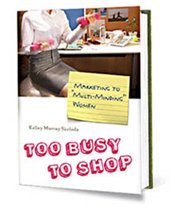Sometimes article titles are overly-explosive in order to drive traffic, and I thought, for a minute at least, that “Preventing Homosexuality (and Uppity Women) in the Womb?” over at Bioethics Forum might be one such example. I’m pretty sure my first gut reaction was wrong.
Most of the article discusses introducing hormones during pregnancy in order to reduce Congenital Adrenal Hyperplasia, and, by statistical correlation, female homosexuality (or, as the journal article put it, “a dose-response relationship of androgens with sexual orientation”). While I am in no way prepared to discuss the biological underpinnings of female homosexuality, I was a bit surprised when I saw the following quote in the article:
“CAH women as a group have a lower interest than controls in getting married and performing the traditional child-care/housewife role. As children, they show an unusually low interest in engaging in maternal play with baby dolls, and their interest in caring for infants, the frequency of daydreams or fantasies of pregnancy and motherhood, or the expressed wish of experiencing pregnancy and having children of their own appear to be relatively low in all age groups.”
In the same article, Meyer-Bahlburg suggests that treatments with prenatal dexamethasone might cause these girls’ behavior to be closer to the expectation of heterosexual norms: “Long term follow-up studies of the behavioral outcome will show whether dexamethasone treatment also prevents the effects of prenatal androgens on brain and behavior.”
One of the chief researchers, Maria New, of Mount Sinai School of Medicine and Florida International University, was giving a presentation, showed a slide of someone diagnosed with CAH, and said the following:
“The challenge here is . . . to see what could be done to restore this baby to the normal female appearance which would be compatible with her parents presenting her as a girl, with her eventually becoming somebody’s wife, and having normal sexual development, and becoming a mother. And she has all the machinery for motherhood, and therefore nothing should stop that, if we can repair her surgically and help her psychologically to continue to grow and develop as a girl.”
My point in posting this is NOT to incite a riot from any one of a number of camps who have strong opinions on subjects like homosexuality or the use of medical intervention to influence certain behaviors. I’m not a behavioral scientist and I’m just scratching the surface of learning more about brain chemistry and how brain development is influenced by gender. However, I’m a bit surprised that a renowned researcher is using societal norms to help define what she seems to perceive as abnormal behavior, a symptom or the result of a disease.
So what does this have to do with marketing? If members of the scientific community are classifying behavior abnormalities based upon whether or not a young girl is playing with dolls or fantasizing about having a baby, it’s not so much of a stretch to understand why marketers can’t get these gender roles out of their own heads. “Even science says a woman wants to get married and have kids,” the brand manager says, “so our campaign needs to reflect that.” I don’t think we (society, marketers, fill-in-the-blank) need another excuse to lean on stereotypes that are fitting fewer and fewer members of society.
Am I reading too much into this? Am I not sophisticated enough to understand the study? Is this an outlier I should ignore, or is this really the type of stuff that keeps us from being able to understand that different isn’t bad but simply different?





